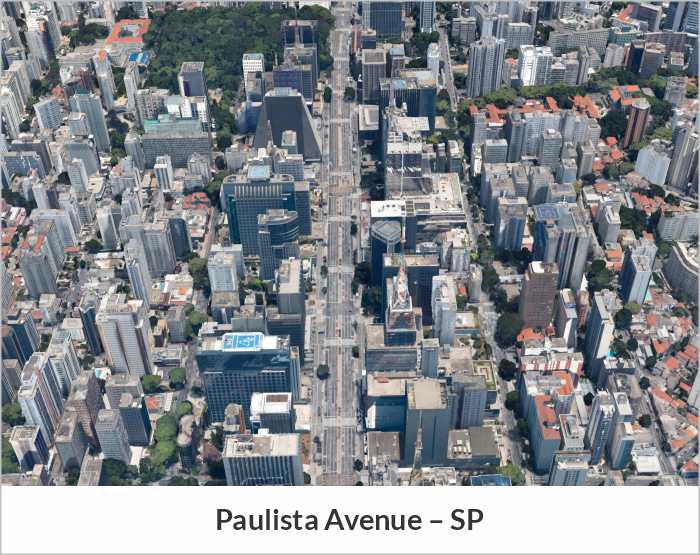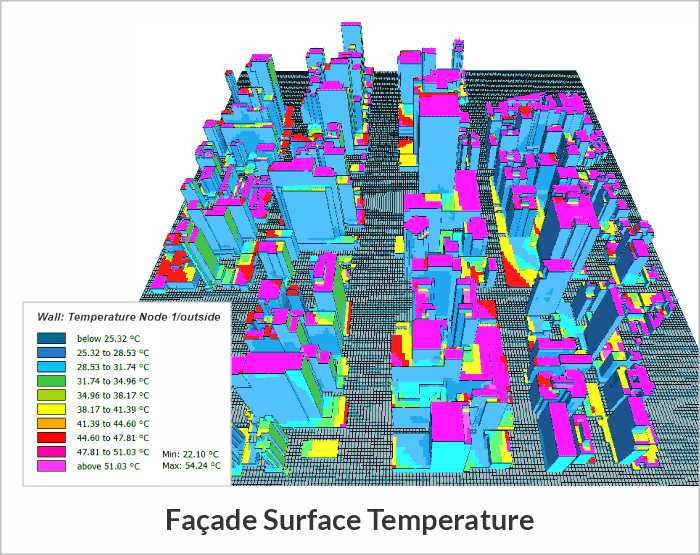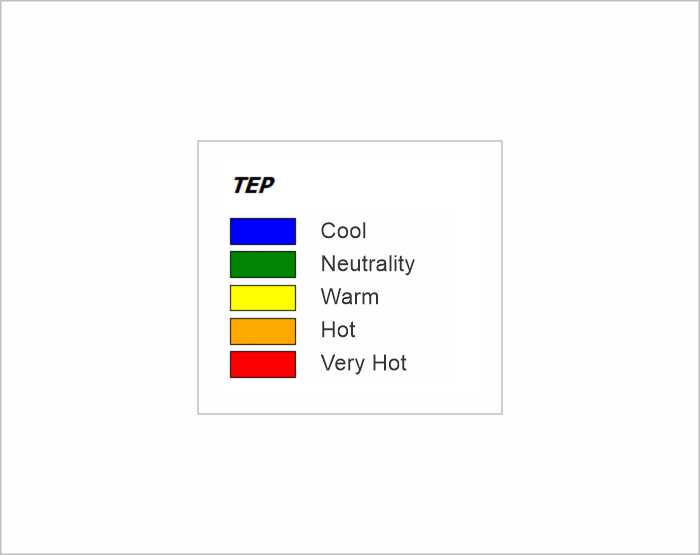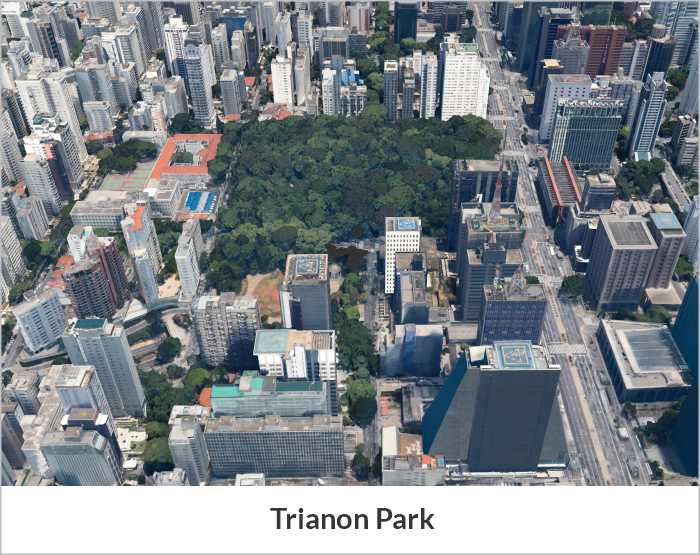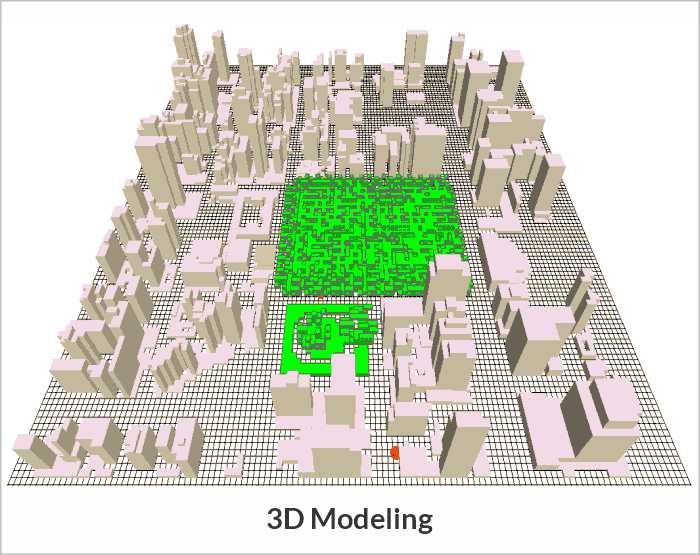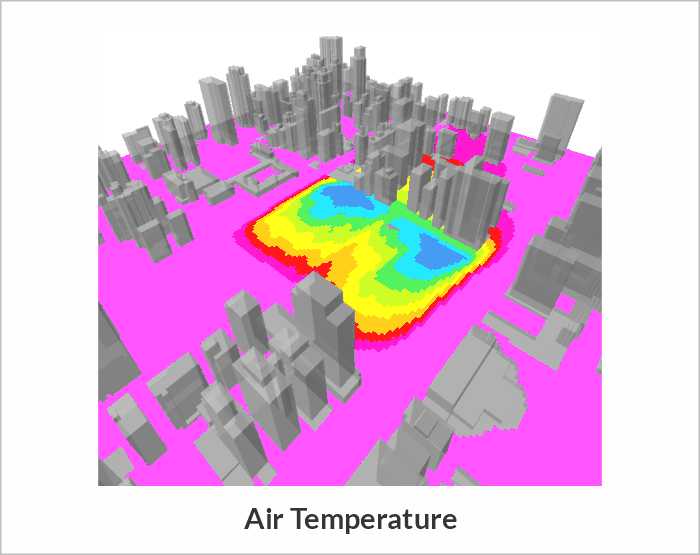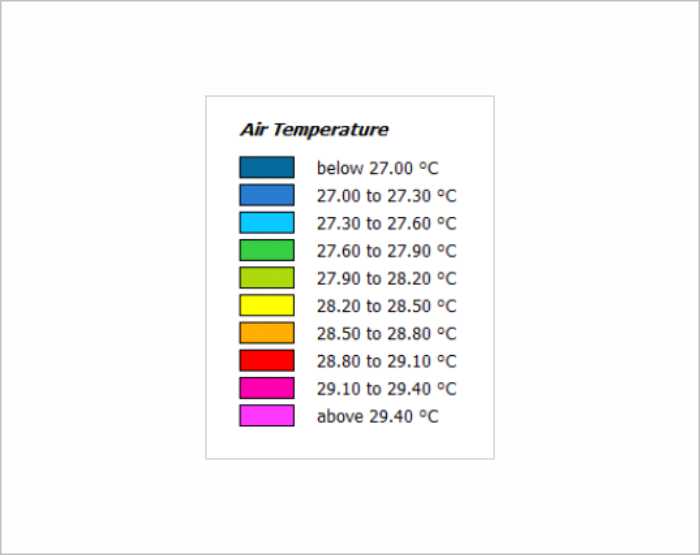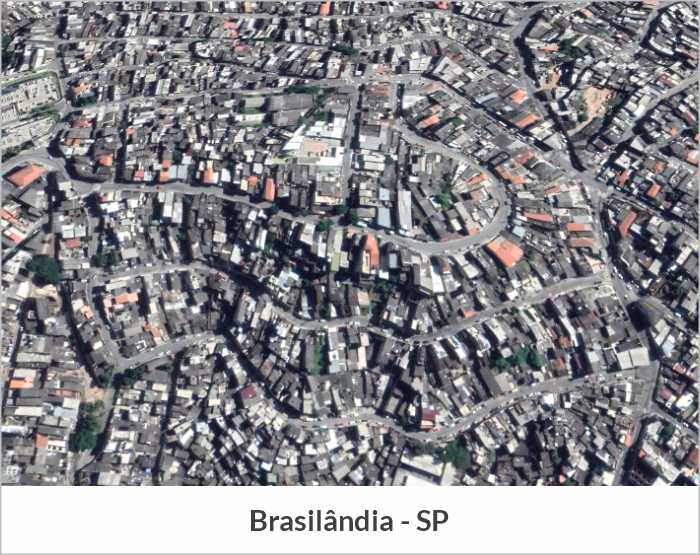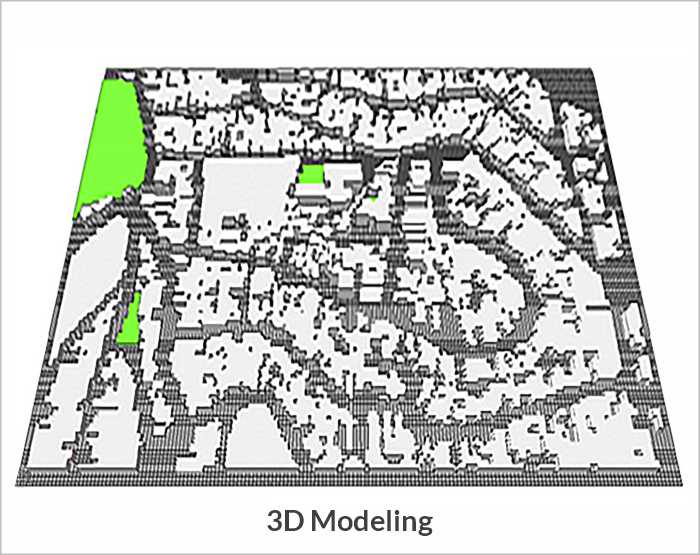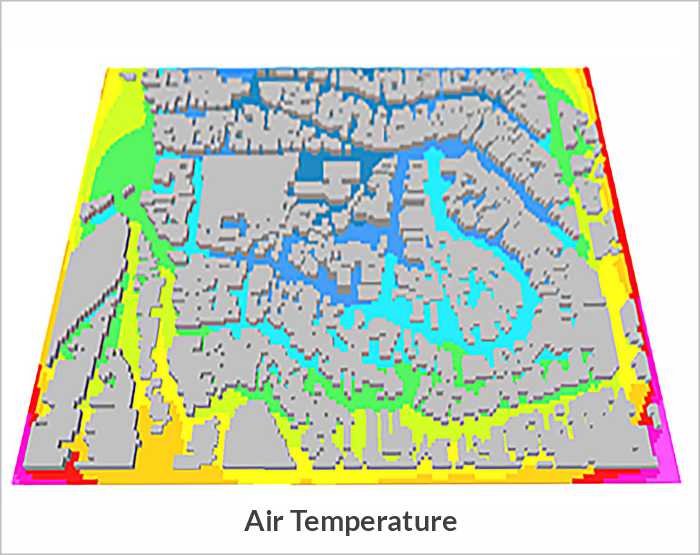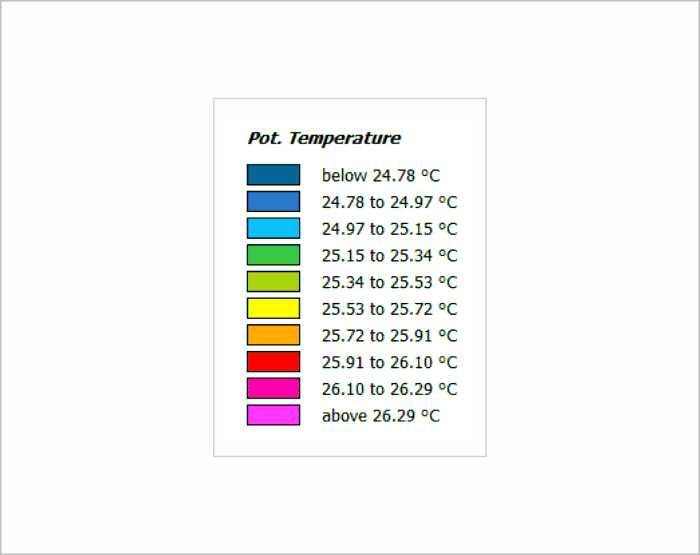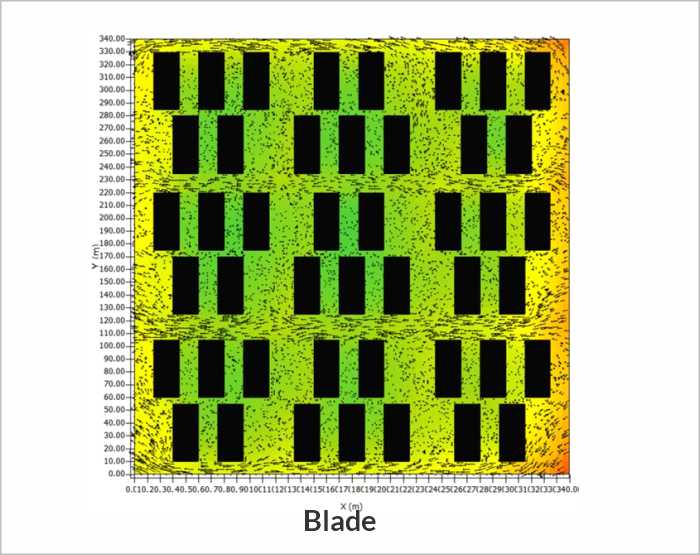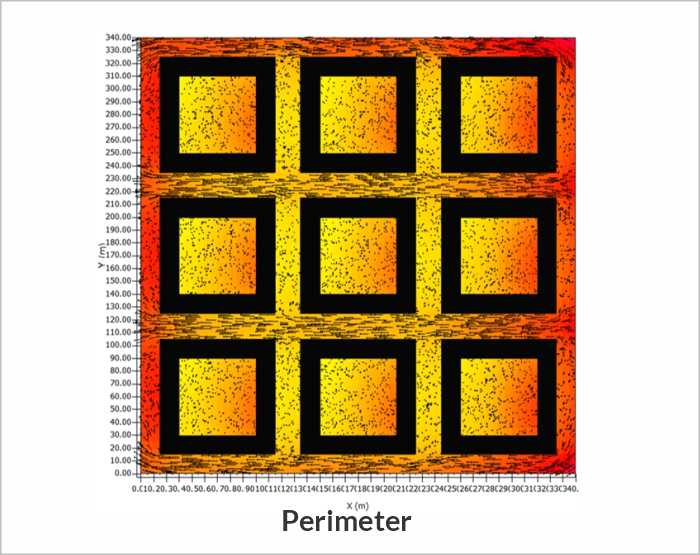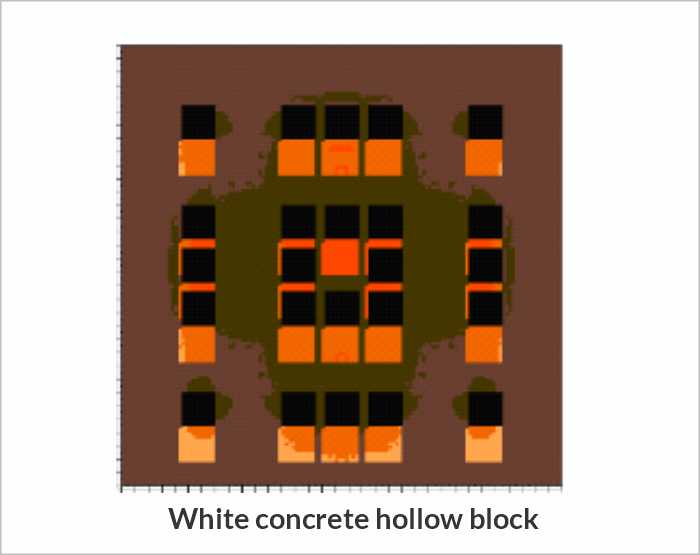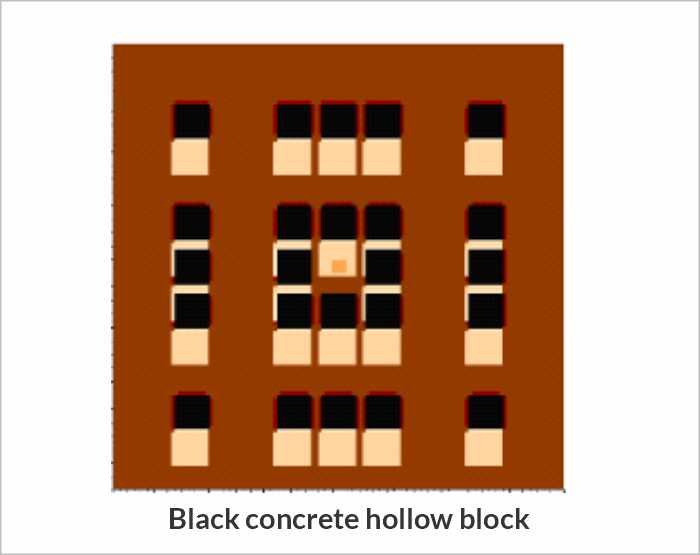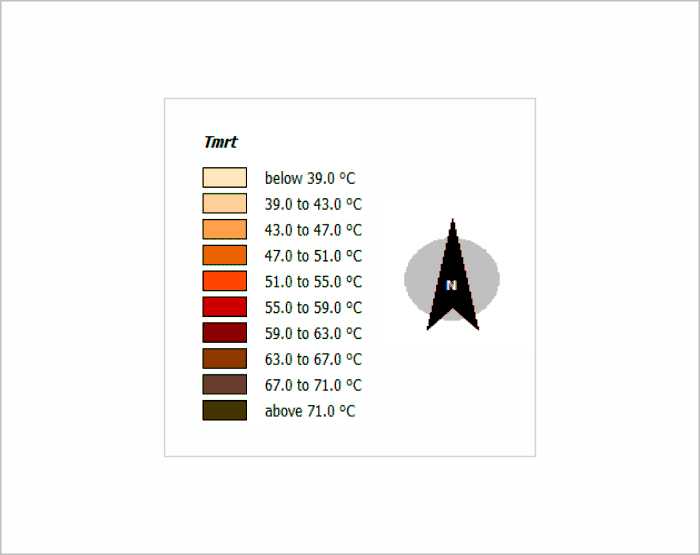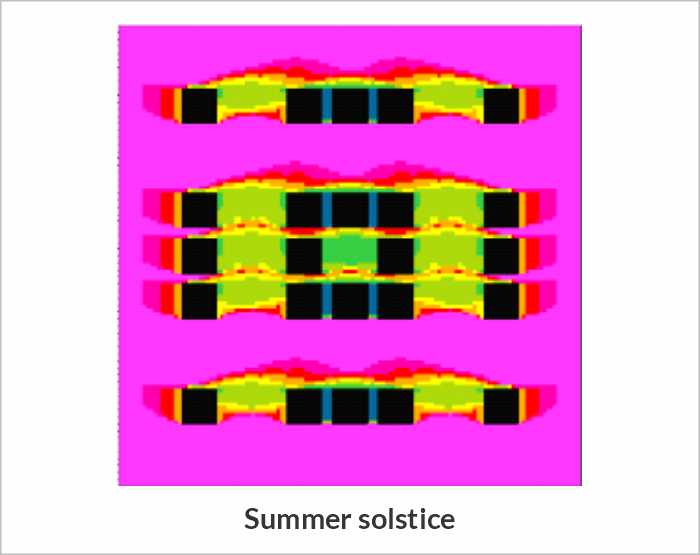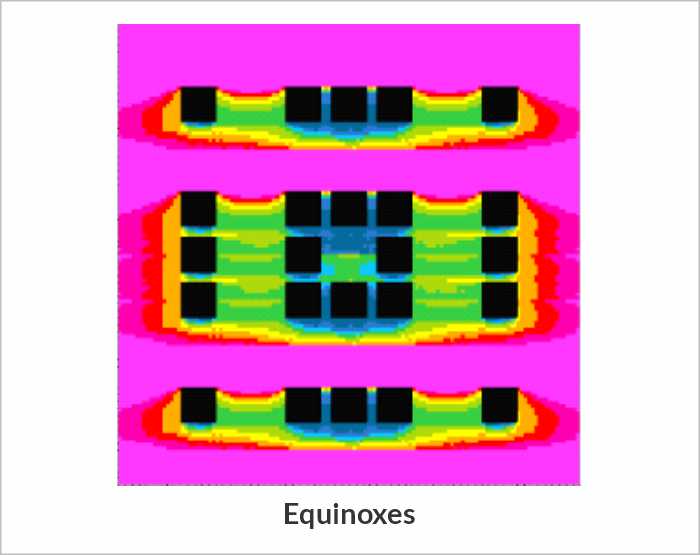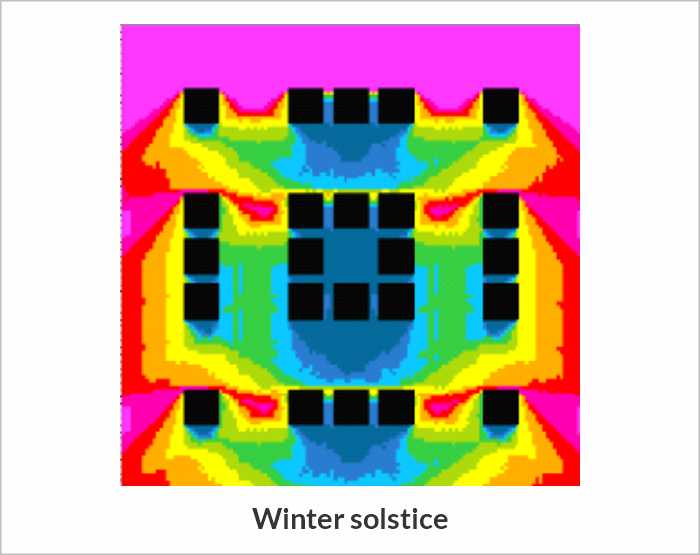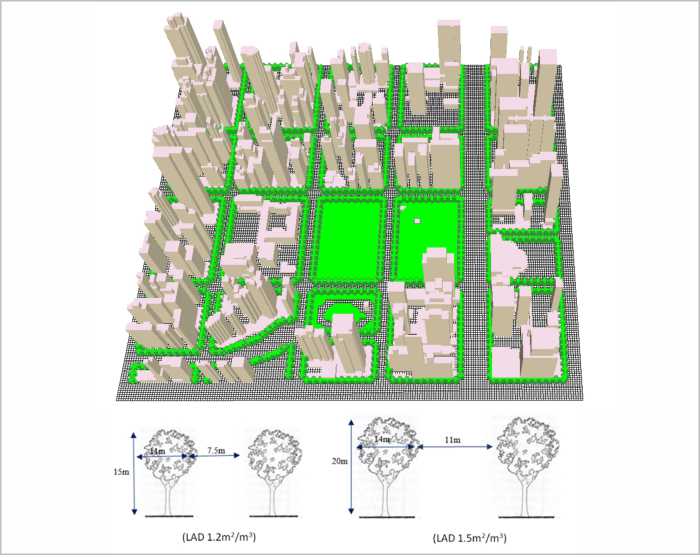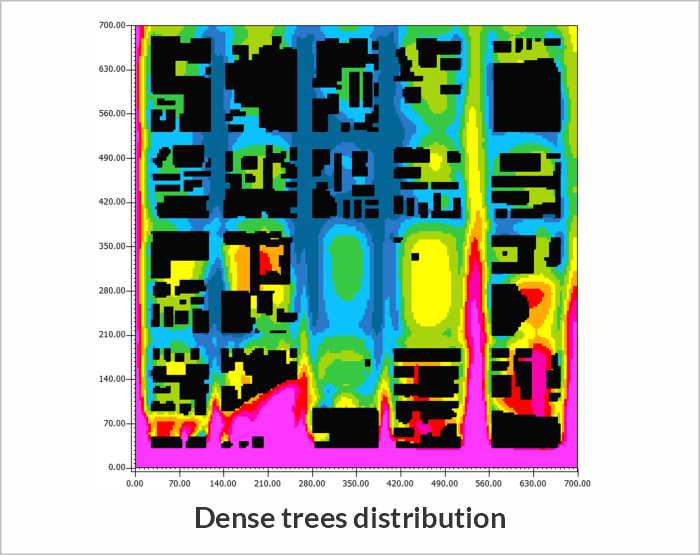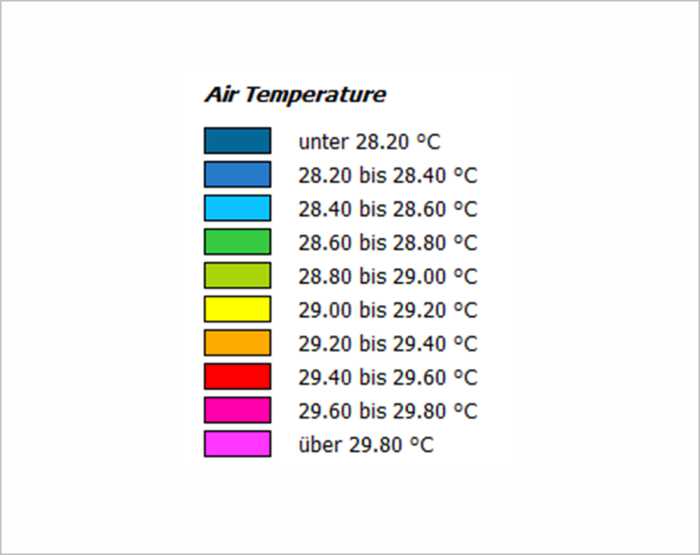Consulting
Our consultancies apply the ENVI-met microclimate model.
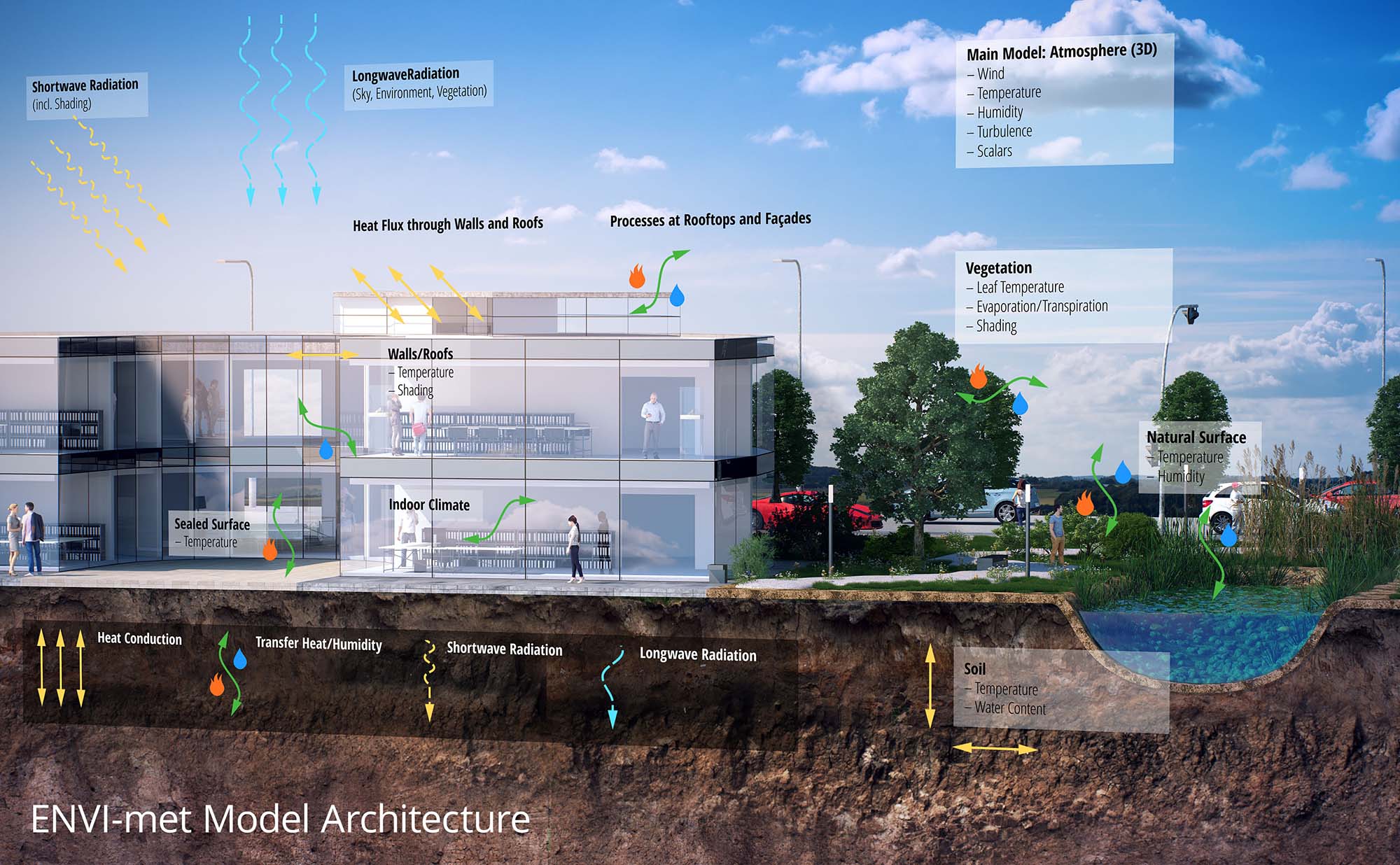
Offered by ENVI-met
ENVI-met Model
ENVI-met is a three-dimensional model to simulate surface-vegetation-atmosphere interactions for urban environments. It analyzes, in a micro-scale perspective, the interaction between urban design and microclimate. This predictive model is based on the laws of fluid dynamics and thermodynamics.
Our consulting services consider the evaluation of the behavior of materials, urban geometry, and vegetation in open spaces based on climatic variables: air temperature, wind speed, relative humidity, mean radiant temperature (MRT), thermal comfort indexes, sun hours, surface temperature, among others.
REAL CASE SCENARIOS
| Case of Paulista Avenue
Analysis of the external façade temperature and the thermal sensation at the pedestrian level in an urban with orthogonal pattern with high building density.
REAL CASE SCENARIOS
| Case of Trianon Masp - SP
Microclimatic effect of Trianon Park on its immediate surroundings. Analysis of the results of air temperature, mean radiant temperature, surface temperature. In addition to specific analyses of tree health (water vapor flux; water uptake by plant roots.).
REAL CASE SCENARIOS
| Case of Brasilândia
Analysis of air temperature at pedestrian level in an urban organic grid pattern with low built density.
PARAMETRIC SCENARIOS
| Effect of Different Urban Typologies
Analysis of air temperature at pedestrian level for different urban building typologies: tower buildings (14-story), blade buildings (10-story), and perimeter block (8-story) with the same built volume.
PARAMETRIC SCENARIOS
| Effect of Different Façade Materials
Analysis of the mean radiant temperature (MRT) at pedestrian level for the same urban geometric scenario (14-story towers), but with different façade materials: white concrete hollow block, black concrete hollow block, and laminated reflective glass.
PARAMETRIC SCENARIOS
| Sun Hours at Different Times of the Year
Analysis of the sun hours at ground level in 4 different periods of the year: summer solstice, winter solstice and equinoxes in a scenario with 14-story tower buildings.
PARAMETRIC SCENARIOS
| Effect of street trees
Analysis of the effect of green infrastructure. Implementation of street trees along the perimeter of each block, according to two types of distribution: (a) rows of dense trees with 11m spacing between trees; (b) rows of medium density trees with 7.5m spacing between
References and links to the studies:
GUSSON, Carolina S.; DUARTE, DENISE H.S. Effects of Built Density and Urban Morphology on Urban Microclimate – Calibration of the Model ENVI-met V4 for the Subtropical Sao Paulo, Brazil. Procedia Engineering, v. 169, p. 2-10, 2016. https://www.sciencedirect.com/science/article/pii/S1877705816332027
GUSSON, Carolina dos Santos; DUARTE, D. H. S. The effect of density on urban microclimate: Simulation of different building typologies for the subtropical Sao Paulo, Brazil. In: PLEA 2016: Cities, Buildings People: Toward Regenerative Environments, 2016, Los Angeles, v. 2. p. 1220-1228. http://www.plea-arch.org/index.php/plea-proceedings/
GUSSON, C. S.; SIMON, H. ; DUARTE, D. H. S. Impact of built density and surface materials on urban microclimate for Sao Paulo, Brazil: Simulation of different scenarios using ENVI-met Full Forcing tool. In: PLEA 2020 A Coruña – 35th PLEA Conference on Passive and Low Energy Architecture – Planning Post Carbon Cities, 2020, A Coruña, v. 1. p. 818-823. https://ruc.udc.es/dspace/handle/2183/26695
SHINZATO, Paula; SIMON, H.; DUARTE, D. H. S. ; BRUSE, M. Calibration process and parametrization of tropical plants using ENVI-met V4 – Sao Paulo case study. Architectural Science Review (Sydney), v. 62, p. 1-14, 2019. https://www.tandfonline.com/doi/abs/10.1080/00038628.2018.1563522
SHINZATO, Paula; DUARTE, D. H. S. ; BRUSE, M. Simulation of microclimatic effects for green infrastructure in the city of São Paulo, Brazil. In: PLEA 2017 – Passive and Low Energy Architecture, 2017, Edinburgh. PLEA 2017 – Design to thrive – Proceedings, 2017. v. 2. http://www.plea-arch.org/index.php/plea-proceedings/

